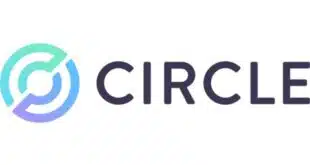The ATM turned 50 this year, and while its usefulness is expanding with new mobile and cardless capabilities, cash remains its strongest suit.
Fifty years ago, the Summer of Love wasn’t the only cultural phenomenon taking place. Across the pond in England a new age in consumer banking was dawning as London’s Barclay’s Bank debuted the first ATM. The machine was a hit, and two years later Chemical Bank introduced ATMs in the United States.
In the half century since its debut, the ATM has been transformed from a cash dispenser into a universal access point for other consumer-banking services, including deposits and checking balances.
Along the way, the ATM has faced challenges from a slew of payment innovations that move consumers away from cash, such as debit cards accepted at the point of sale and digital wallets. Yet the ATM has not just survived, it continues to thrive.
ATM operators eager to integrate the machine into the increasingly mobile-first world of digital transactions are embracing a variety of new applications. The most prominent of these is the cardless ATM transaction, which allows consumers to cue up and initiate cash withdrawals through their smart phone. Other new functions include picking up money transfers, paying bills, and purchasing prepaid or gift cards.
The pivot toward increasing ATM functionality through software, as opposed to hardware-based add-ons, is being driven by two factors: cost and interoperability. In many cases, it’s more cost-effective to develop and upload an app than to install a hardware add-on, says David Tente, executive director, USA and Latin America, for the Sioux Falls, S.D.-based ATM Industry Association.
In addition, ATM applications can be written using open-source coding to ensure interoperability regardless of the make of the ATM, the network it is connected to, or the mobile wallet used by consumers to transact with the machine, something that is not always easy to achieve with a hardware add-on.
“The ATM is becoming app-driven, because with open-architecture operating systems, ATMs can embrace the mobile culture and remain relevant to mobile-payments users when it comes to getting cash,” says Bruce Wayne Renard, executive director for the Jacksonville, Fla.-based National ATM Council Inc., which, like ATMIA, is a trade group for ATM deployers.
While cardless ATM transactions were developed to enable consumers who have lost their ATM card or had it stolen to get cash, ATM deployers and technology providers see broader uses for the technology that could attract more users and increase transaction volume.
These include sending a money-transfer recipient a single-use code that can be entered into an ATM to get the cash. Or redeeming cash rewards or rebates, or monetizing a person-to-person transaction, says Donna Embry, chief payment advisor for Louisville, Ky.-based Payment Alliance International, a private ATM network operator and ATM processor.
Cashing out rewards and rebates through an ATM also reduces the cost of issuing them since companies no longer need to cut a check or load the value onto a prepaid card and mail it to the consumer, Embry says.
Reaching the Unbanked
Cash remittances represent a large opportunity for ATM operators to reach the unbanked, who frequently send money using remittance services.
In September, Mastercard Inc. announced Cash Pick-up, a cash-disbursement service that allows consumers to pick up cash from a participating ATM using a mobile phone and a secure code, even if the recipient doesn’t have a debit card or bank account. The service was scheduled to begin piloting during the fourth quarter.
To initiate a transaction, the sender, which can be an individual, company, or organization, creates an order through a card issuer that is part of the Mastercard Cash Pick-up network using a Mastercard portal, and provides the recipient’s phone number. Next, the card issuer creates a tokenized, virtual debit card number and sends it, along with the money order, to the ATM acquirer using Mastercard’s Cirrus ATM network.
The virtual card, which is unseen by the consumer, is used for authorization and settlement. Upon authorization, the recipient of the cash is sent a text message with an order number, four-digit PIN, and directions to the nearest ATM in the Cash Pick-up network. Once the PIN is entered, the cash is automatically dispensed.
To help manage deployment of the service, Mastercard has partnered with HalCash, which operates a cardless-cash ATM service in New York City, Miami, Chicago, and Los Angeles under the Pin4 brand. The company also operates a cardless-disbursement system in Spain and Poland. Payment Alliance is also partnering with Mastercard and will begin offering the service in 2018. Cash Pick-up initially will be available in the U.S and then expand to other countries, Mastercard says.
“This is another cash-disbursement tool for people without a debit card or bank account, like Mastercard Send,” says Daniel Goodman, senior vice president, product management ATM for Mastercard. “We are targeting consumers (in that demographic) that want access to retail ATMs close to their home, which is why we are partnering with Payment Alliance.”
Mastercard plans to eventually expand the service to bank-owned ATMs, Goodman adds.
Mastercard Send is an interoperable global platform that enables funds to be sent in near real-time using existing person-to-person payments services. In October, Mastercard partnered with Western Union to integrate Mastercard Send into its money-transfer service.
Variations on Cardless
Other players launching cardless ATM solutions include Brookfield, Wis.-based Fiserv Inc., which operates the Accel network, Houston-based Cardtronics plc, which operates 233,000 ATMs worldwide, and Fidelity National Information Services Inc. (FIS). These companies offer slightly different flavors of cardless ATM transactions.
To initiate a Fiserv CardFree Cash transaction, a consumer contacts his financial institution and undergoes a series of security checks to authenticate himself. After authentication, the consumer is sent an 11-digit code and a PIN. Financial institutions decide how to deliver the access codes, such as through their mobile app or text, says Carol Specogna, vice president for Fiserv.
To get cash from an ATM, the consumer touches the cardless transaction button on the ATM screen, enters the 11-digit number and PIN, and proceeds with his withdrawal just as if the transaction had been initiated by inserting a card in the ATM.
Fiserv, which declines to reveal how many financial institutions use the service, says 2 million cards are in the program. All CardFree Cash transactions run through Fiserv’s Accel ATM network. CardFree Cash debuted in 2015.
Specogna says emergency cash is the jumping off point for other types of cardless ATM services in the future, including payroll withdrawals and rewards or rebate redemptions. “We are also looking at using cardless codes for e-commerce transactions,” she says. “It’s a secure transaction, because the codes are not tied to a bank account or debit card.”
FIS gives its cardless solution a slightly different twist. Consumers can cue up transactions before visiting an ATM by opening their banking app, searching for the nearest ATM, requesting a cash withdrawal, and selecting the desired amount. At the ATM, the consumer selects mobile cash access and scans the QR code that appears on the ATM’s screen with her smart phone. The cash is dispensed and an electronic receipt is delivered to the consumer’s mobile-banking app.
Doug Brown, FIS’s senior vice president for mobile, says a Cardless Cash transaction can take place at the ATM in 10 seconds, compared about 50 seconds when inserting a card.
Payment Alliance is also rolling out Cardless Cash. Cardtronics, meanwhile, began integrating Cardless Cash service across its U.S. ATM fleet earlier this year.
Blazing a Trail
Besides increased convenience, the absence of an ATM card removes the risk of card skimming and a thief capturing the consumer’s PIN with a camera. To further enhance security, FIS is piloting a Bluetooth beacon integrated into a mobile-banking app that can be used to communicate with a card reader that unlocks the door to an ATM vestibule. The application is an integration to the door-controller units that run the door-lock mechanism, FIS says.
“Hackers are inserting skimmers into the card readers on vestibule doors and this feature eliminates the risk of having a card skimmed when a consumer is entering a locked vestibule,” Brown says.
Like other cardless-technology providers, FIS is looking at extending the service to include remittance pickup and disbursement of disaster-relief funds. The company is also piloting its cardless technology outside the U.S.
Aside from cardless cash disbursement, ATM technology providers see the opportunity to develop apps that allow consumers to pay bills through ATMs, top off minutes for prepaid cell phones, and even cash checks to the penny.
One company blazing a trail in these areas is Maya, a Sherman Oaks, Calif.-based provider of self-service payment terminals. For about a year, Maya has been piloting 10 bill-payment kiosks, the majority of which are located in southern California.
Besides paying bills, consumers can purchase gift cards from such retailers as Wal-Mart and Amazon. The cards are sent electronically by email or mobile phone in the form of a code and can be entered on the retailer’s Web site. Maya users can also top off their mobile phones. And the company is looking to expand into cash remittance.
Granted, services such as check cashing require hardware changes to the ATM, but for ATM operators convinced they can attract the volume to justify the investment, cost is not a barrier, payments experts say.
Bank of America’s ATM with Teller Assist, for example, cashes checks to the penny. Consumers can also withdraw amounts in $1, $5, $20, and $100 bills, and make loan or credit card payments. The machine features a video screen that connects the customer to a live teller. Spanish speaking tellers are available.
“This kind of functionality makes the ATM more like a branch by meeting the higher-level needs of ATM users,” says Kevin Morrison, senior analyst, retail banking and payments, for Boston-based consultancy Aite Group.
‘Not Going Away’
Still, for all the action behind broadening the ATM’s purpose, cash remains king. “Expanding ATM functionality is something that has been experimented with for years and hasn’t necessarily moved the needle with consumers, because the ATM is first and foremost a cash dispenser,” says Morrison.
As long as consumers need cash, payments experts agree they will need ATMs. While the push to connect the ATM to the mobile-first world is cutting-edge technology, its primary purpose is to satisfy Millennials’ need for cash by marrying it to their preference for transacting through their mobile phones.
A recent study from Accel + Qualtrics reveals that while Millennials are 16 times more likely than Baby Boomers to adopt digital wallets, they are five times more likely to use cash than mobile-payment platforms.
Further strengthening the case for the ATM is that cash is the most frequently used form of payment. In 2015, cash was used in 32% of all transactions, including bill payments, according to the latest figures available from the Federal Reserve Bank of San Francisco.
Add it all up, and the signs point to a long, healthy run for the ATM doing what it was originally created to do. “The ATM is the most ubiquitous channel to access bank accounts for cash, no matter what new functionality is added,” says Sam Ditzion, chief executive of Boston-based consultancy Tremont Capital Group Inc. “It’s for that reason the ATM is not going away.”
Happy 50th birthday, ATM.





